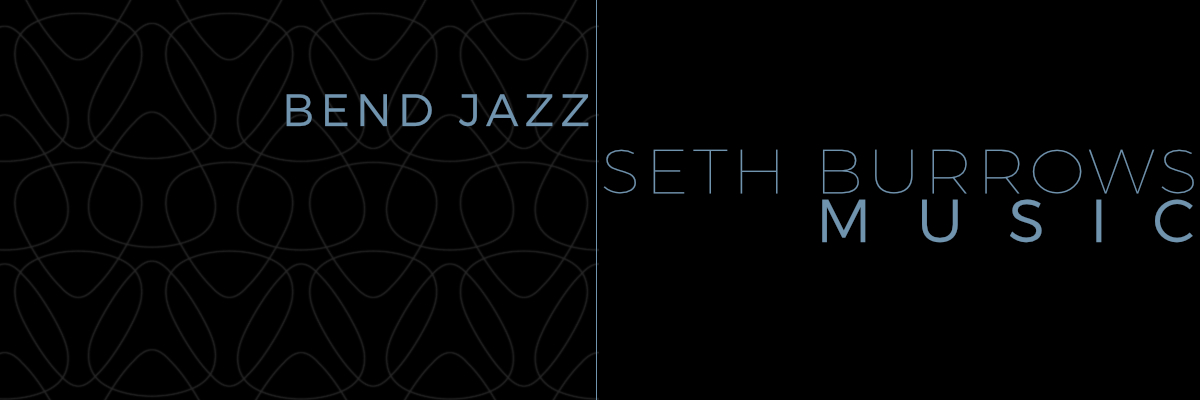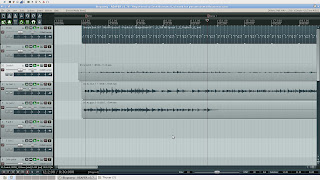Hello again, non-followers!
This week’s post is going to be an in-depth walk-through of how I record my demos. To get an idea of the equipment I use, please refer to last week’s post.
First things first: I have a Song. I’d say that it’s basically 90% finished by the time I start the demo. It’s not totally finished, because most of the time things change as I start to get things recorded. There are usually things that sound strange and could use a little tweaking. I like to think of the demo process as a much needed step in pre-production that lets me test things to see if they work FOR the idea I’m presenting in the song, or AGAINST it.
The Scratch Track
So the first step is to load the template I have created that has my instruments and effects pre-loaded, and decide on a tempo:
Once I have the tempo ironed-out, I play through the song once, playing guitar and singing, using REAPER’s metronome tool to keep me playing in time. I label this track “Scratch.”
Like this:
Acoustic Guitars
After that, I render the track as an MP3, so I can put it in my iPod and listen to it a couple of (dozen) times and make sure the arrangement is correct. Once I have determined that everything is cool, I look for an appropriate drum beat that will be the NEW AND IMPROVED “metronome” for recording the “real” acoustic guitar tracks. When I have the basic drum groove settled, I record acoustic guitars. Usually, I record one track playing the chords in an open (or close to open) position on the guitar.
For the second guitar, I usually use a capo in a higher position.
When I’m happy with the performances, I like to pan them left and right to some degree (this depends on the song), and add a little compression and stereo widening, to make the acoustic guitars sound big and to sort of leave space in the middle.
So now I have two acoustic guitars playing in different registers, and a basic drum part, playing a loop of the BASIC drum groove of the song.
Better Drums
This is where the hard, time consuming part comes in: at this point, I start WRITING the drum part. The process I use to do that is fairly easy to describe, but it takes hours to actually DO. Basically, I drag and drop the BASIC drum part of the song to various areas in the song. For example, in the verses, I’m usually using a drum beat that has an eighth-note pattern on the hi hat, but for the chorus, I’m using largely the same beat, but with the eighth-note pattern on the ride cymbal. This is also the point at which I put the drum stops in the right places and put markers in so I know where each section of the song begins and ends.
After the new and improved (but still not finished) drum part has been done through the end of the song, I start on the bass.
Bass
I don’t have a real bass. I know. I know. Working on it. Until I actually purchase one, I’m using a VST plugin for my bass sound. You can get it here: 4Front Bass. I like this plugin because it sounds “real” enough to be on a country or rock demo. Basically, it doesn’t sound “synthy” and that’s why I like it. While the internet is FULL of synth bass plugins, plugins that sound like actual wood and wire basses are sort of thin on the ground.
This is where I compose the bass part. Manually. In the piano roll screen. Yeah, it takes a while…The composing part of this equation involves locking the bass in with the kick drum and making the part build in intensity as the song progresses. Sometimes this involves reshaping the kick drum to fit some of the bass parts. I just aim for consistency and parts that interlock to advance the EMOTIONAL THEME of the song.
Scratch Vocals
At this point, I like to record a Scratch Lead Vocal Track (usually labelled “Scratch LV,” but for some reason labelled “Lead Vocal” here). I do this before I edit the bass and drums to their final forms and before I record the electric guitar parts. I think it goes a long way towards making the project feel more “real” when I can react to the vocals and the final drum and bass parts as I lay down the electric guitar parts.
I think I’ll stop here this week, before we get deep into electric guitars and vocals. I’d probably also render a new MP3 of this song in its current form, so I can listen to it and try to figure out what kinds of electric guitars I’m hearing in my “mind’s ear.”
This Week:
Jason Isbell and the 400 Unit–Here We Rest
Darrell Scott–A Crooked Road
http://xkcd.com/







